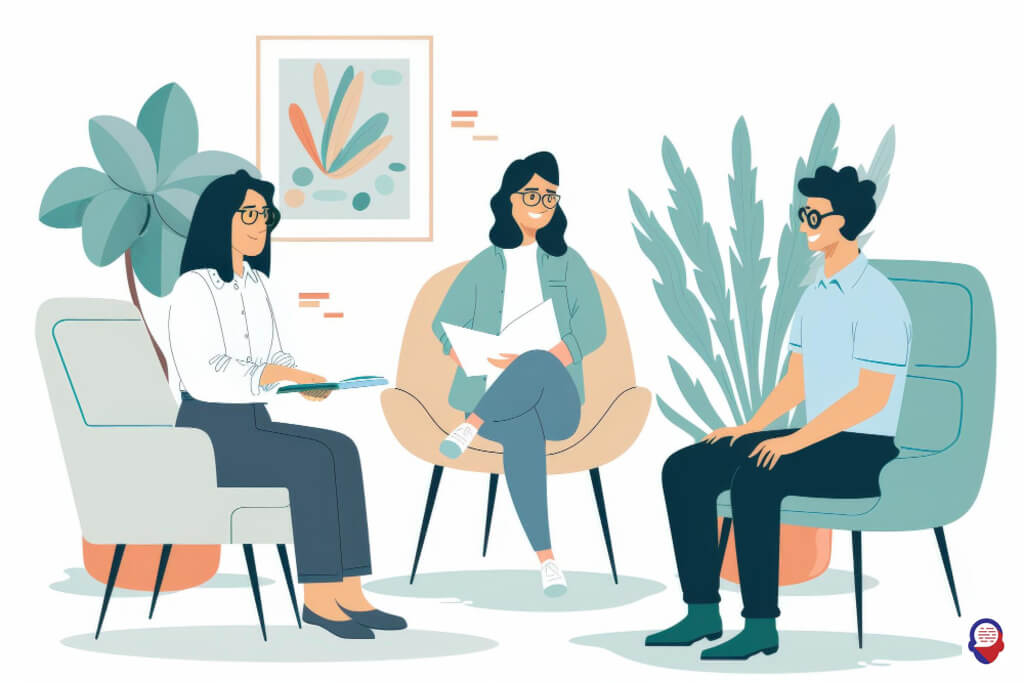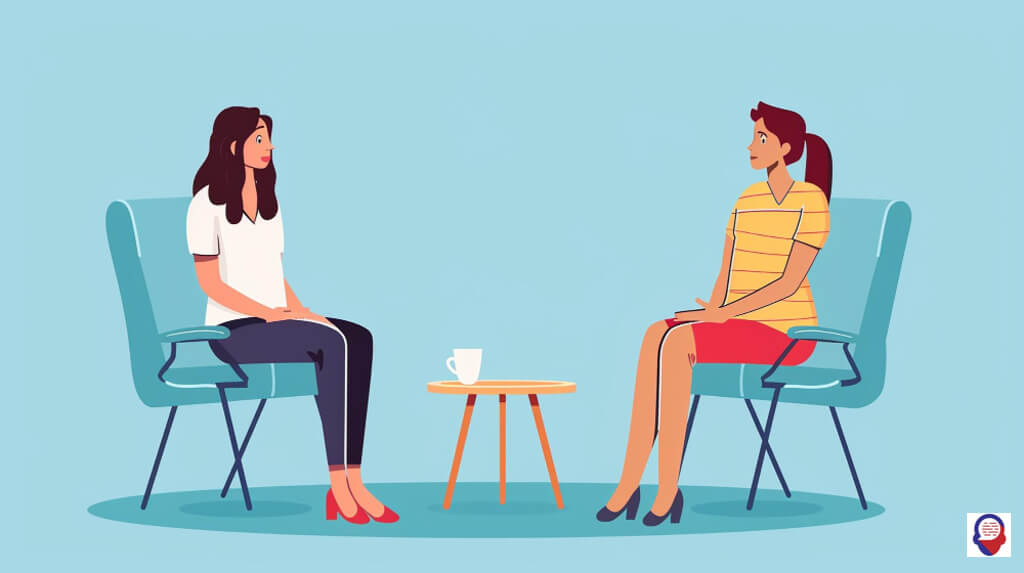Face Your Fears, Reclaim Your Life: A Guide to ERP
Have you ever felt trapped in a loop? A cycle where a persistent, unwanted thought sparks a wave of intense anxiety, and the only way to find relief is to perform a specific action, a ritual, a compulsion. This cycle can feel isolating and all-consuming, shrinking your world one fear at a time. But what if there was a way to break that chain, to face the fear head-on and teach your brain that the danger it perceives isn’t real? There is, and it’s one of the most powerful tools in modern therapy.
This approach is a form of Cognitive Behavioural Therapy (CBT) known as Exposure and Response Prevention, or ERP. It isn’t about simply ignoring your fears or "thinking positive." It’s an active, structured, and scientifically-backed method for systematically dismantling the architecture of anxiety. It’s a courageous journey of confronting your triggers, not to overwhelm you, but to empower you. By learning to sit with discomfort without resorting to your usual safety nets, you discover a profound truth, your own resilience. This guide will walk you through what ERP is, how it works, and why it has become the gold standard for treating conditions like Obsessive-Compulsive Disorder (OCD) and other anxiety-related challenges.

What Exactly Is Response Prevention Therapy?
Response Prevention Therapy, most accurately called Exposure and Response Prevention (ERP), is a highly effective therapeutic technique where you are gradually and repeatedly exposed to the thoughts, images, objects, and situations that make you anxious, while simultaneously making a commitment to not perform the compulsive behaviour you would normally use to reduce that anxiety. The goal is to break the powerful association your brain has made between a specific trigger and the compulsive response. It’s about learning, through direct experience, that your anxiety will naturally decrease on its own without the need for a ritual.
This therapy is built on two fundamental pillars. The "Exposure" component involves systematically confronting your fears, starting with things that are only mildly distressing and working your way up a carefully planned ladder. The "Response Prevention" part is the crucial act of resisting the urge to engage in your compulsive or avoidant behaviours. Together, these two elements work to retrain your brain, weakening the obsessive-compulsive cycle until it no longer holds power over you.

Who Can Benefit From This Type of Therapy?
This therapeutic approach is most famous as the leading treatment for Obsessive-Compulsive Disorder (OCD), but its principles are incredibly effective for a wide range of other conditions rooted in anxiety and avoidance. Anyone whose life is limited by a cycle of fear and ritualistic or avoidant behaviour can potentially find significant relief through this structured process. It targets the very mechanism that keeps anxiety alive.

Is It Effective for Obsessive-Compulsive Disorder (OCD)?
Yes, Exposure and Response Prevention is considered the gold-standard, first-line treatment for OCD. Its effectiveness is backed by decades of extensive scientific research, showing that it produces significant, long-lasting improvements for the majority of individuals who complete the therapy. It is more effective than medication alone for many people.
The reason it works so well for OCD is that it directly targets the core engine of the disorder, the vicious cycle of obsessions and compulsions. Obsessions create distress, and compulsions provide temporary relief, which powerfully reinforces the obsession. ERP systematically breaks this link. By facing the obsessive thought or trigger (exposure) and refraining from the compulsion (response prevention), you learn that the anxiety, while uncomfortable, is manageable and will eventually fade on its own. Your brain learns that the catastrophic outcome you fear does not happen, and the compulsion is unnecessary.

Can It Help With Other Anxiety Disorders?
Absolutely. While it is the champion treatment for OCD, the core principles of exposure and response prevention are adapted and used to effectively treat many other anxiety-related conditions. The fundamental mechanism, confronting feared stimuli without engaging in safety behaviours, is a powerful tool for unlearning fear across the board.
For specific phobias, like a fear of flying or spiders, exposure therapy involves gradually interacting with the feared object or situation. For social anxiety disorder, it might involve planned social interactions while resisting the urge to flee or mentally rehearse conversations. In panic disorder, it can involve interoceptive exposures, which means intentionally triggering the physical sensations of a panic attack, like a racing heart, in a safe environment to learn that these sensations are not dangerous.

What About Conditions Like Body Dysmorphic Disorder or Trichotillomania?
Yes, the principles of ERP are highly relevant and effective for Body-Focused Repetitive Behaviours (BFRBs) and related disorders. For Body Dysmorphic Disorder (BDD), which involves obsessive preoccupation with a perceived flaw in appearance, ERP targets the compulsive behaviours like excessive mirror-checking, reassurance seeking, or camouflaging. The exposure might involve reducing mirror time or going out without makeup, while preventing the response of checking or hiding.
For conditions like Trichotillomania (hair-pulling) or Excoriation (skin-picking), the "response prevention" part is often paired with a technique called Habit Reversal Training (HRT). The therapy helps you become more aware of the triggers for the behaviour and then teaches you to engage in a competing response, an action that is physically incompatible with pulling or picking, until the urge subsides. It’s about interrupting the automated chain of behaviour and replacing it with a new, healthier response.

How Does Response Prevention Actually Work?
Response Prevention works by creating a structured learning experience for your brain, a process that rewires your fear response through direct experience. It systematically exposes you to your feared triggers in a controlled, gradual way, while you make the conscious choice to refrain from the compulsive rituals or avoidance behaviours you typically use to feel safe. This powerful combination teaches your brain two crucial lessons: first, that the thing you fear is not as dangerous as you believe, and second, that you can handle the feeling of anxiety without needing to "escape" through a compulsion.
Over time, this process leads to habituation, a natural decline in your anxiety response when you remain in the presence of a trigger. Your brain essentially gets bored of the false alarm. This direct, experiential learning is far more powerful than simply talking about your fears, as it creates new, stronger neural pathways that override the old, fearful ones. It’s not about eliminating anxiety forever, but about changing your relationship with it, so it no longer controls your decisions and your life.

What Is the “Exposure” Part?
The "exposure" component is the active, intentional process of confronting the thoughts, images, objects, and situations that trigger your anxiety and obsessions. This is never done haphazardly. Instead, it is a carefully calibrated process that you design collaboratively with your therapist, ensuring it is challenging but not completely overwhelming.
This process almost always begins with the creation of a "fear hierarchy," sometimes called a SUDS ladder (Subjective Units of Distress Scale). You and your therapist will list all of your triggers and rate them on a scale from 0 to 100 based on how much anxiety they provoke. The therapy then starts with exposures that are low on the hierarchy, perhaps a 20 or 30 out of 100, allowing you to build confidence and skills before moving up to more difficult challenges. Exposures can be "in vivo" (in real life), "imaginal" (vividly imagining the feared scenario), or "interoceptive" (purposefully inducing feared physical sensations).

What Is the “Response Prevention” Part?
The "response prevention" element is arguably the most critical and transformative part of the entire therapy. It is the deliberate act of stopping yourself from performing the compulsive ritual or avoidance behaviour that your anxiety is screaming for you to do. It is the moment you choose to break the cycle.
If your obsession involves contamination fears, response prevention means touching a "contaminated" object and then not washing your hands for a set period of time. If you have checking compulsions, it means locking the door once and walking away, resisting the overwhelming urge to go back and check again. For mental compulsions, it might mean allowing an intrusive thought to be present without engaging in the mental ritual of neutralizing it, praying, or reviewing events to find certainty. This is where the real learning happens, as you prove to yourself that you can survive the anxiety without the ritual.

What Is Habituation and Why Is It Important?
Habituation is the natural psychological process where your emotional and physiological response to a repeated stimulus decreases over time. It is the scientific principle that makes ERP so effective. When you first face a trigger during an exposure exercise, your anxiety will spike, but if you stay in the situation and prevent your compulsive response, that anxiety will inevitably peak and then begin to fall, all on its own.
This is profoundly important because it provides undeniable proof to your brain that the "danger" signal was a false alarm. Each time you successfully complete an exposure and allow habituation to occur, you are weakening the connection between the trigger and the fear response. You are not just tolerating anxiety, you are actively teaching your nervous system that it doesn’t need to sound the alarm so loudly. Over many sessions, this leads to long-term change, where the original triggers no longer provoke the same level of intense distress.

What Should I Expect During a Therapy Session?
You should expect a therapy session to be an active, collaborative, and structured experience, not a passive conversation. From the very beginning, you are an equal partner in your treatment, working with your therapist to understand your specific challenges and build a concrete plan to address them. A typical session involves reviewing homework from the previous week, problem-solving any difficulties, and then engaging in a new exposure exercise right there in the office, followed by a plan for the week ahead.
The atmosphere is one of supportive guidance. Your therapist acts as your coach, encouraging you to step outside your comfort zone at a pace that is manageable for you. They will provide education about the process, help you stay motivated, and celebrate your successes. It’s a hands-on approach focused on doing, not just talking.

How Does a Therapist Help Me Prepare?
A therapist prepares you for ERP through a careful and thorough initial phase focused on assessment and education. First, they will conduct a detailed assessment to fully understand the nature of your obsessions and compulsions, what you fear, and what you do to cope. This is essential for creating a tailored treatment plan.
Next comes psychoeducation, where the therapist explains the OCD or anxiety cycle in detail, helping you understand exactly how your brain has become trapped. They will introduce the ERP model, explaining the rationale behind exposure and the critical role of response prevention. Crucially, you will work together to build your fear hierarchy, collaboratively deciding on the first steps of your exposure journey. This preparation phase ensures you feel informed, empowered, and ready for the work ahead.

What Happens During an Exposure Exercise?
During an in-session exposure exercise, your therapist acts as your guide and support system. They will help you select an appropriate task from your fear hierarchy. Before you begin, you’ll rate your anxiety level using the SUDS scale. Then, you will engage with the trigger, for example, touching an object you consider contaminated or writing out a feared thought.
As your anxiety rises, your therapist will be right there with you, encouraging you to stay with the feeling without performing any compulsions. They will help you focus on the present moment, reminding you that the goal is to ride the wave of anxiety and let it pass naturally. You will continue to rate your SUDS level until you observe it begin to decrease, which is the process of habituation in action. The exercise concludes when your anxiety has significantly reduced, providing a powerful experience of success.

What Is the Role of Homework?
Homework is the cornerstone of successful ERP therapy, as it is where the real, lasting change happens. While in-session exposures are vital for learning the skills and building confidence, the ultimate goal is to apply these skills to your everyday life. One hour of therapy a week cannot undo the countless hours you spend living with anxiety, so practice is essential.
Your therapist will assign specific exposure exercises for you to complete between sessions. This homework is designed to generalize the learning from the therapy room to the real world. It involves systematically practicing the exposures you’ve worked on in session and gradually tackling new ones from your hierarchy. Consistently completing your ERP homework is the single most important factor in achieving a positive and durable outcome from the therapy.

Is This Therapy Difficult or Scary?
Yes, it is accurate to say that ERP is a challenging therapy that will intentionally provoke anxiety. The entire point of the treatment is to face the very things that scare you, so feeling scared and anxious during the process is not only expected, it is a necessary part of the healing journey. However, it is crucial to understand that this is done in a controlled, systematic, and supportive environment.
The process is designed to be manageable, not traumatizing. You are never thrown into the deep end. Instead, you start with small, manageable steps and build your way up, ensuring you develop the confidence and skills needed to handle more difficult challenges. The difficulty is a sign that the therapy is working, pushing you just beyond your comfort zone where real growth occurs.
Will I Be Forced to Do Something I Don’t Want to Do?
No, you will never be forced to do anything against your will. ERP is a fundamentally collaborative therapy. You are in the driver’s seat of your treatment. You work with your therapist to create the fear hierarchy, and you agree on every exposure exercise before you begin it.
The therapist’s role is that of a coach, not a commander. They will encourage you, challenge you, and support you in pushing your own boundaries, but the ultimate decision to proceed always rests with you. The therapy is built on a foundation of trust between you and your therapist. Its success depends on your willingness to engage, and that willingness must be your own choice.

How Do I Cope With the Anxiety During an Exposure?
Coping with the anxiety during an exposure is a skill you learn, and it involves strategies that are fundamentally different from your usual compulsions or avoidance tactics. The primary instruction is to simply allow the anxiety to be there, to watch it and feel it without judgment and without trying to make it go away. You learn to "surf the urge," riding the wave of discomfort knowing that it will eventually crest and subside.
Your therapist may also teach you supplementary skills like diaphragmatic breathing or mindfulness techniques. These are not used to escape the anxiety, but to help you stay grounded in the present moment while the exposure is happening. The key is learning to tolerate the distress, which in itself is a powerful new coping skill that undermines the foundation of your anxiety.

Is It Possible to Fail at Response Prevention Therapy?
It is more helpful to think of setbacks rather than failure. Setbacks are a normal and expected part of the ERP process. There will be times when an exposure feels too difficult, or you give in to a compulsion. This is not a sign of failure, it is a valuable learning opportunity.
When a setback occurs, you and your therapist will explore what happened, what made it difficult, and how you can adjust the plan to be more successful next time. Perhaps the step was too large, or you needed more support. The key to success in ERP is not perfection, but persistence. It’s about getting back up after a difficult moment, learning from it, and continuing to move forward, one courageous step at a time.
Frequently Asked Questions

How long does the therapy usually take?
The duration of ERP therapy can vary depending on the severity and complexity of the condition, but it is generally considered a short-term, focused treatment. For many individuals, significant improvement can be seen within 12 to 20 weekly sessions. The goal is to equip you with the skills to become your own therapist, so you can continue to apply the principles long after the formal sessions have ended.

Is it the same as just “facing your fears”?
No, ERP is fundamentally different from the casual advice to "just face your fears." While the sentiment is similar, ERP is a highly structured, evidence-based psychotherapeutic procedure. It is guided by a trained professional who helps you create a systematic plan, ensures exposures are done correctly and safely, and provides crucial support during the most difficult part, the response prevention. Simply forcing yourself into a feared situation without the proper framework can be overwhelming and may even make the anxiety worse.

Can I do this therapy on my own?
While many excellent self-help books and resources on ERP exist, it is strongly recommended that you undertake this therapy with a qualified therapist, especially at the beginning. A therapist provides essential expertise in creating an appropriate fear hierarchy, guiding you through exposures safely, and helping you navigate the intense emotions that arise. They can troubleshoot problems and keep you motivated when the process becomes difficult. Attempting it alone can be risky, as it’s easy to do exposures incorrectly or become too overwhelmed without professional support.

What if my compulsions are purely mental?
ERP is highly effective for "Pure O," or OCD that involves primarily mental compulsions. These compulsions can include things like mental reviewing, thought neutralization, reassurance-seeking in your own mind, or praying. In this case, the exposure would involve purposefully bringing up the intrusive thought (the obsession), and the response prevention would be the act of resisting the urge to engage in that internal, mental ritual. The goal is to allow the obsessive thought to exist in your mind without "fixing" it, learning to tolerate the uncertainty and anxiety until it fades naturally.

Your Path Forward Starts Here
Taking the first step to confront the patterns that have held you back is an act of immense courage, but it is a journey you do not have to walk alone. The principles of Exposure and Response Prevention are about empowerment, about teaching you that you are more resilient than your anxiety has led you to believe. It is about breaking the cycle and stepping back into a fuller, richer life.
At Counselling-uk, we believe in providing a safe, confidential, and professional place to get advice and help with mental health issues, offering support for all of life’s challenges. If you are ready to stop letting fear make your decisions, our compassionate and highly trained therapists are here to guide and support you through every step of the process. Reach out to us today, and let’s begin the work of reclaiming your life, together.




Although response prevention therapy (RPT) has been shown to be an effective treatment for anxiety disorders such as obsessive-compulsive disorder (OCD), there are some drawbacks associated with this approach as well. One potential issue is that some people find it difficult to resist performing rituals or compulsions when faced with triggers related to OCD. This can make it difficult for them to make progress in therapy or experience long-term benefits from this form of treatment.